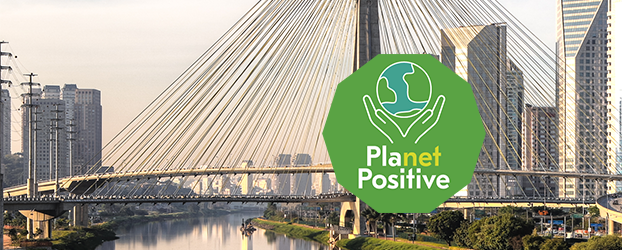Metso Outotec is committed to the 1.5 °C journey in line with the Paris Agreement. We aim for a Planet Positive impact in everything we do, and our environmental footprint is one of the dimensions we are focusing on. We do things efficiently and responsibly in terms of the environment, and we aim to minimize our environmental footprint. By changing the current ways of operating, we help to create a more sustainable future.
Making great strides towards a smaller footprint: we reduced our CO₂ emissions by 60%

CO₂ emissions from own operations
-60%
CO₂ emissions created from logistics
-29%
Reducing CO₂ emissions is one of the biggest aspirations. We have set an ambitious CO₂ target for our operations: we want to halve our emissions by 2030. We took a giant step towards this in 2020 by reducing our CO₂ emissions by 60% compared to 2019. This great achievement was due to a variety of CO₂-related actions, such as changing from natural gas to biogas, investing in new furnaces, replacing conveyors with a pneumatic system to transport sand, and reducing ladle-heating time. One of the biggest projects has been to acquire REC-GoO (Renewable Energy Certificate – Guarantee of Origin) for electricity. Nearly all our locations are now using green energy from renewable sources.
In addition to our own operations, we also track the CO₂ emissions created by logistics and expect to reduce them by 20% by 2025. We have involved our suppliers in the battle against climate change by setting a target that 30% of our suppliers in terms of spend set science-based emissions targets by 2025. Many of our logistics partners already share the same climate ambition and have set science-based targets. Changes in transportation modes, reduced volumes, and optimization in warehousing and logistics routes contributed to the 29% emissions reductions in 2020.
Amount of landfill waste
-38%
Water consumption
-24%
We also pay attention to water and waste actions. In an effort to improve the sharing of good environmental practices, we ran a pilot in 2020 with a few selected business areas. They were asked to report, on a monthly basis, a specific number of good practices or actions implemented. More than 50 actions were reported and, for example, the amount of landfill waste was reduced by 38% by finding ways to recycle the slag and sand from our foundries. New water meters, new water faucet aerators, the refurbishment of cooling towers, and the reuse of wastewater are examples of water-efficiency actions taken in 2020 – actions that led to a 24% decrease in water consumption.
We have made great strides, but there is still a lot more potential yet to be utilized. We already have more than 80 local and business area initiatives to be implemented during the coming years. In most cases, the new initiatives represent good opportunities to develop environmental performance and potentially reduce internal costs. Now we need to ensure that the implementation of all these mapped initiatives is carried out. We must also continue looking for new ways and ideas to improve environmental efficiency.

